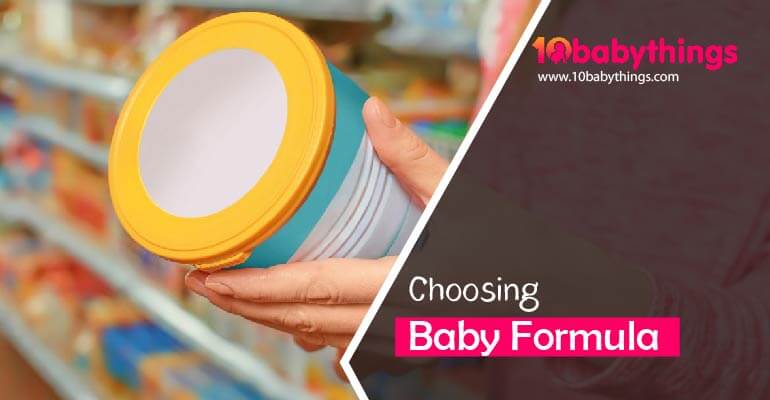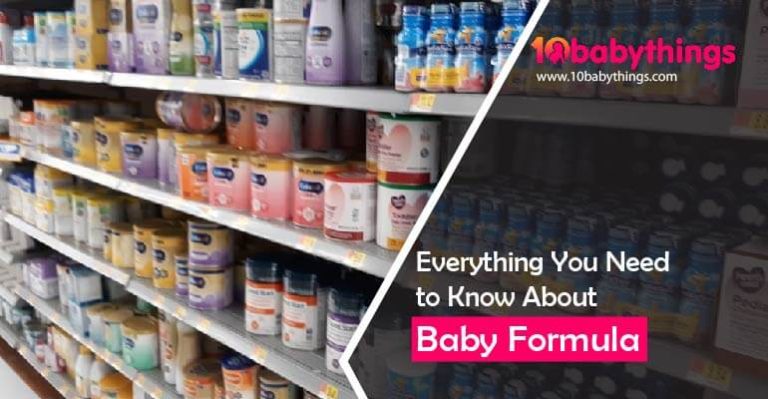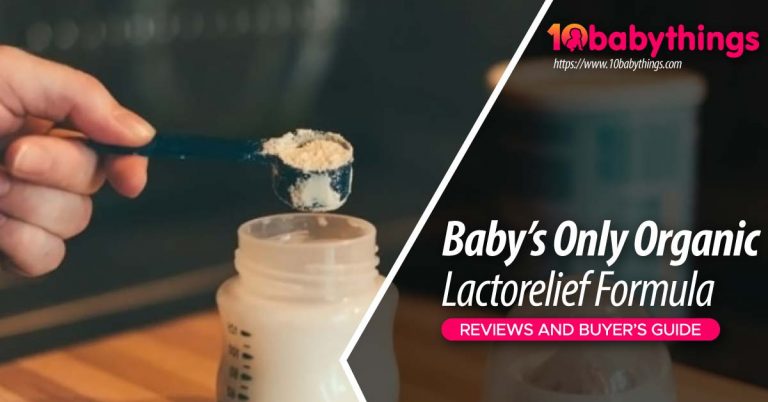Choosing the Right Baby Formula for Your Child

Infant formula selection was not a complicated process decades ago. Formulas came in a variety of brands, but most of them were quite similar. Different kinds of nutrients, milk bases, and other nutritional elements are present in baby formulas today. Get some tips on choosing the best baby formula for your little one.
A standard cow’s milk formula is often the first choice for families and then they change it as issues arise. Discuss the options with your family’s pediatrician if you don’t know which formula to choose.
1. FDA approves all formulas in the US
Regulations and laws related to food are overseen by the Food and Drug Administration (FDA) in the United States. AAP’s Committee on Nutrition guides these standards for infant formula as well.
To be more specific, the FDA requires certain levels of nutrients in all infant formulas.
2. Ready-to-feed, powdered, or concentrated?
It is important to consider the form in which the formula is sold when buying it. The three most common kinds of formula are powdered, liquid concentrates, and ready-to-feed. There are benefits and drawbacks to each type.
There are several advantages to each type:
- Powdered. When storing, this option is the most economical, environmental-friendly, and takes up the least amount of space. The product is shelf-stable for one month after opening, making it perfect for breastfeeding moms who supplement on occasion.
- Concentrate. There is a lower cost and less space requirement with this option than with a ready-to-use formula. Compared to powdered versions, it takes a little less time to prepare.
- Ready for use. The most convenient option is this one. If you are concerned about water safety, ready-to-use formula is hygienic.
Here are the cons of each type:
- Powdered. The most effort is required to prepare this option. It is essential that you follow the mixing instructions precisely. When you are out and about, it may be more challenging to use. The water used to prepare the drink should also be of good quality.
- Concentrate. When you’re on the go, this option isn’t as convenient. Choosing the right drinking water is crucial just as with powdered versions.
- Ready-to-use. There is no economic benefit to this option. As well as being environmentally unfriendly, it isn’t a good choice. There is a 48-hour shelf life for ready-to-use formulas after opening. The darker color of this formula can cause stubborn stains when compared to powdered and concentrated formulas.
3. Formula types
Infant formula can be divided into four categories: formulas that are made from cow’s milk, formulas made from soy, formulas that are lactose-free, and formulas that are hypoallergenic.
Comparing names and brands versus generics can help you distinguish between them, and you can ask your pediatrician about specific ingredients.
FDA-required nutritional standards must be met by generic labels, which are often similar to the name-brand formulas.
4. Ingredients added
Certain ingredients may be added to infant formulas by manufacturers for specific purposes. Rice thickening is used in formulations designed to treat acid reflux symptoms (often denoted with “AR”). Consult your doctor before starting to use AR formulas.
In addition to DHA and ARA, formulas may also contain other additives. Make sure your baby’s doctor knows about these additives before you use them in a formula.
5. Using the formula for how long
Your baby’s doctor should recommend changing formulas only if he or she recommends it as a treatment for a health condition.
Symptoms of a baby who isn’t tolerating a particular formula include:
- Irritable bowel syndrome or diarrhea
- A tendency to spit up or vomit excessively
- A tendency to fuss excessively
- Bruises
Until your child is one year old, you should continue using a formula that works.
6. How much formula should I give my baby?
The volume of liquid a newborn drinks per feeding is usually between one and two ounces. Babies need two to two and a half ounces per pound of body weight of formula each day up to the age of six months.
This rule would suggest that a 10-pound baby needs roughly 20 ounces to 25 ounces of formula each day. A baby should not consume more than 32 ounces of liquid per day, according to most pediatricians.
Taking your baby’s lead will help you understand when he or she is hungry or full. It is also important for someone else to be aware of your baby’s cues when they are giving your baby a bottle.
If you are concerned about how much formula your baby requires, speak to your pediatrician.
It’s not necessarily a bad thing for babies to eat more or less from day to day; minor changes aren’t necessarily a problem.
It’s important to watch out for signs that your baby is getting too much or too little to eat.
Symptoms of an undernourished baby include:
- Crying continued
- Intense urination
- Loose and wrinkled skin
- Gaining weight slowly
You can tell if your baby gets too much formula by:
- Pain in the abdomen caused by colic
- Weight gain that is excessive
- Vomiting or spitting up intensely
- Their legs are pulled up to their chests



